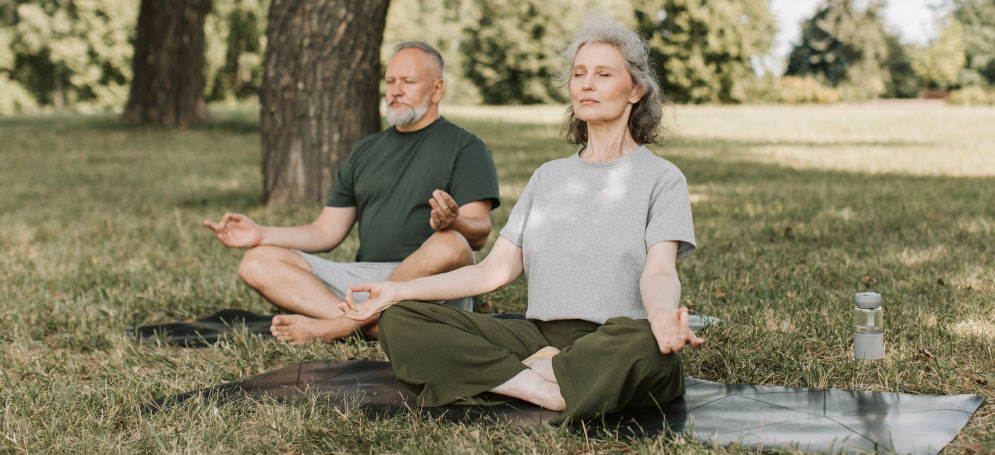Top Tips and Tricks For Staying Independent after 60

When you look ahead to your golden years, where do you see yourself?
As an independent, active individual, you probably envision yourself aging in the comfort of your own home and living independently for as long as possible. While this is ideal, most understand that some challenges are associated with aging at home. However, with some thoughtful planning and preparation, you can have the environment and resources you need to live independently as you age.
Concerned about Aging at Home? You’re Not Alone.
If you’re feeling a little unsure about how you’ll age at home, you’re not alone. A recent survey from March of Dimes Canada identified a significant “aging in place gap”:
- About 78% of Canadians say they would prefer to age in their own homes.
- Only 26% of respondents think they’ll actually be able to stay at home as they age.
Why do so many seniors think that aging at home won’t be possible? One barrier is financial. Although aging at home is often more cost-effective than living in a retirement home or long-term care facility, about 50% of seniors surveyed identified the cost of home modifications as a challenge.
Another potential obstacle is the lack of support resources. For instance, if you don’t have a trusted caregiver or loved one close by, it can be challenging to get around to doctor appointments or do your shopping. But with some planning and help from the right resources, you can overcome these challenges and stay independent long into your golden years.
Independence Starts Right at Home
The whole point of being independent is that you can get out of the house, so it might seem counterintuitive to focus first on preparing your home. But you spend lots of time there, and it’s important to make it as safe and accessible as possible. Falls pose an increased risk to us as we age, so start by looking for opportunities to reduce your risk of falling:
- Build an access ramp for each entrance to your home. Most of us remember the front door, but also consider adding a ramp into your backyard and garage, along with any side doors. This way, your entire property will remain more easily accessible, and you’ll have more options for escaping safely in case of an emergency.
- Install assistive devices. This sounds complicated, but “assistive devices” refers to simple things like handles and railings that give you something to help you move more safely throughout the home. For example, grab bars in the shower or near the toilet can help you use the bathroom more safely.
- Embrace the non-slip grip. Just as a grab bar is helpful in the shower, so is a non-slip mat. You might also consider placing non-slip tape on stairs, or grip tape on handrails.
- Light up your life. Adequate lighting can help prevent tripping over things you simply didn’t see! Add lighting to stairs and any other areas of your home that could use a little extra illumination. Battery-powered tap lights are a good option if adding a new light fixtures isn’t a realistic option. Using brighter lightbulbs can also help improve your lighting.
- Rethink your rugs. The corners of rugs can pose a serious tripping hazard–the corners can curl, or they can get bunched up and wrinkled. In some cases, a good non-slip backing will fix the problem. In others, it might be better to get rid of the rug altogether.
These aren’t the only ways to improve your safety at home. Many older adults get great peace of mind from a personal medical device, which can contact emergency services or a caregiver with the push of a button. Lots of devices exist, and you can choose one that best suits your lifestyle.
Speaking of technology, smart home devices are also gaining popularity. These tools offer features like smart locks and automated access; medication reminders and biomonitoring; and automated control of lights and thermostats. Smart voice assistants can also help you make phone calls, listen to music, and even control other smart devices in your home.
Not sure where to start with a smart home? The Tuktu team can help!

Strive to Stay Fit – Both Physically and Mentally
Our physical and mental health are both critical factors in how well we’re able to live on our own.
- Find a physical activity routine that works for you. As we age, we sometimes have to rethink our workout routines. Talk with your doctor or another trusted healthcare professional about developing a routine that fits your health needs and preferences. If you’ve given up favorite activities due to physical limitations, your doctor can help you find a safe way to continue that activity or identify a satisfying alternative.
- Stay connected to your friends and family. These days, it can be tough to maintain relationships with even our closest friends. But these connections are so important to our mental health! Try to prioritize social engagement with your friends and family. Technology like FaceTime, Zoom, and even Facebook Chat can help you stay in touch and feel like you’re face-to-face, despite physical distance.
- Venture outside your comfort zone. Your daily routines are important, but research consistently shows that learning a new skill is one of the best ways to improve your memory and mental acuity. The more technical the skill, the bigger the potential gains! Think about a new hobby like quilting, photography, or woodworking.
- Treat your brain like a muscle. Flex your mental muscle with intellectually challenging activities. These might include conventional exercises like reading, doing puzzles, or listening to classical music. But other endeavors like art and cooking can also be very mentally challenging, so feel free to channel your inner Picasso or Julia Child!
- Don’t neglect community connection. Did you know that social isolation can be as damaging to your health as smoking 15 cigarettes a day? And according to Community Food Centres Canada, approximately one in six Canadian seniors is socially isolated. Simple outings like going to the local farmer’s market or a church group will help you stay connected to your community.
Get Connected with the Right Resources
But what if you can’t get to those outings? Automobiles are by far the most common way for Canadians to get around, regardless of age, gender, health, or other factors. So if you’re not driving anymore, getting around can present a real challenge. Although the Canadian government has prioritized making the country’s transportation system more inclusive for older adults, those improvements won’t help you get
to that doctor’s appointment tomorrow.
If you’re an older adult looking for transportation in the Vancouver area, Tuktu can certainly help. You’ll get a safe ride from a friendly neighbor who’ll provide the support and attention you need to truly enjoy the journey.
While transportation is certainly a common hurdle for seniors who want to stay independent, it isn’t the only one. The resources below can also help you maintain your independence:
- CanAge: Seniors Advocacy Group for Canadians
- Active Aging Canada
- Canada.ca – Planning for Aging in Place
At Tuktu, we firmly believe that community connections should be an integral part of independent living at every age. That’s why our community-based app connects mature adults with members of their own neighborhood for support and companionship.


